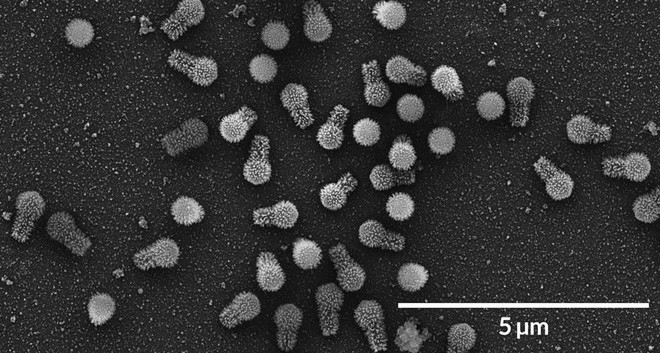The newly discovered giant virus can change our definition of viruses
Is the virus a living creature or is it something like a zombie?
In an article in Nature Communications, scientists said they have discovered two new strains of giant viruses in Brazil. What is special about these viruses is that they are so complex in size and genetic structure that they can change the current human definition of the virus.

Two newly discovered giant strains of virus can change our definition of viruses.
Two strains of virus are called Tupanvirus , according to the thunder god in Brazilian mythology - Tàã. Although they are not a threat to humans, the existence of Tupanvirus will challenge the definition of the current boundary of our virus.
Freshwater lake Tupanvirus and one are deep sea Tupanvirus , exactly as the name suggests, both living in harsh water environments. They are one of the largest viruses ever discovered, and also contain the most protein-producing organs ever.
Tupanvirus virus has a tassel shape and is so large that it can be seen with conventional optical microscopes. Their length can reach 2.3 micrometers. Genetic structure of Tupanvirus consists of 1.5 million DNA base pairs. As a result, the number of proteins they encode can be up to 1,425 types.
In terms of protein synthesis, Tupanvirus is the largest 'protein-producing translation machine' in the world of viruses, ' said researcher Bernard La Scola from the University of Aix-Marseille, France.
The cumbersome genetic structure places Tupanvirus in the Mimiviridae family , named after the Mimivirus giant virus, identified in 2003. At that time, the Mimivirus was the largest shell-diameter virus ever examined. break. In addition, it has many other remarkable properties.
Before the Mimivirus was discovered, the virus was often considered completely separate from living organisms. Because of the inability to synthesize proteins (a job needed to produce energy), the virus is considered half-life and half is something that does not live. They are often likened to zombies.
It is obvious that current definitions stipulate that the virus has no cell life. However, the genetic complexity of Mimivirus - and other giant viruses discovered later - challenged the boundary of that theory.
Giant viruses carry genes with full functionalities such as fixing defects in DNA, replicating DNA, copying and translating for protein synthesis."With the discovery of these viruses, we have seen that these genes may exist in viral genomes ," said Jônatas Abrahão, one of the researchers who discovered Tupanvirus.
"This feature has changed the concept we use to distinguish between viruses and organisms that are constituted by cells." The more information we have about giant viruses, the more we learn what they are capable of doing.
Tupanvirus strains contain not only a complete set of genes needed for protein production - about 30% of their genome has not been known to science. These genes are extremely special and have never been recorded in any species, from ancient bacteria to modern and eukaryotes.

Magnified images at different sizes of Tupanvirus.
Tupanvirus and giant viruses generally contain many mysteries to explore. But until now, we have a good news that no matter what kind of creature they are, Tupanvirus doesn't harm humans.
They only infect the amoeba. Therefore, unless you are an amoeba, you must fear the Tupanvirus. Unlike the giant viruses previously discovered, Tupanvirus infects many different amoeba species, probably becoming a terror to these parasites.
- Detecting giant viruses raises the question of what is life?
- Discovering new viruses that harm animals
- Detecting giant virus underneath the Indian city, copying the gene of the host
- Humans have mistakenly thought that the virus is a small creature
- Why are more and more new viruses threatening humans?
- Pandoravirus - missing link found between virus and cell
- Further detection of new EMC virus causes pneumonia
- 10 most dangerous viruses of all time
- Discover the world's most
- What is a virus? How is the virus infected?
- Virus detection makes people silly
- Discovering new 'monsters' has the ability to invade a human body
 Why do potatoes have eyes?
Why do potatoes have eyes? 'Tragedy' the world's largest carnivorous life: Death becomes ... public toilet
'Tragedy' the world's largest carnivorous life: Death becomes ... public toilet Tomatoes were once considered 'poisonous' for 200 years
Tomatoes were once considered 'poisonous' for 200 years Detecting microscopic parasites on human face
Detecting microscopic parasites on human face